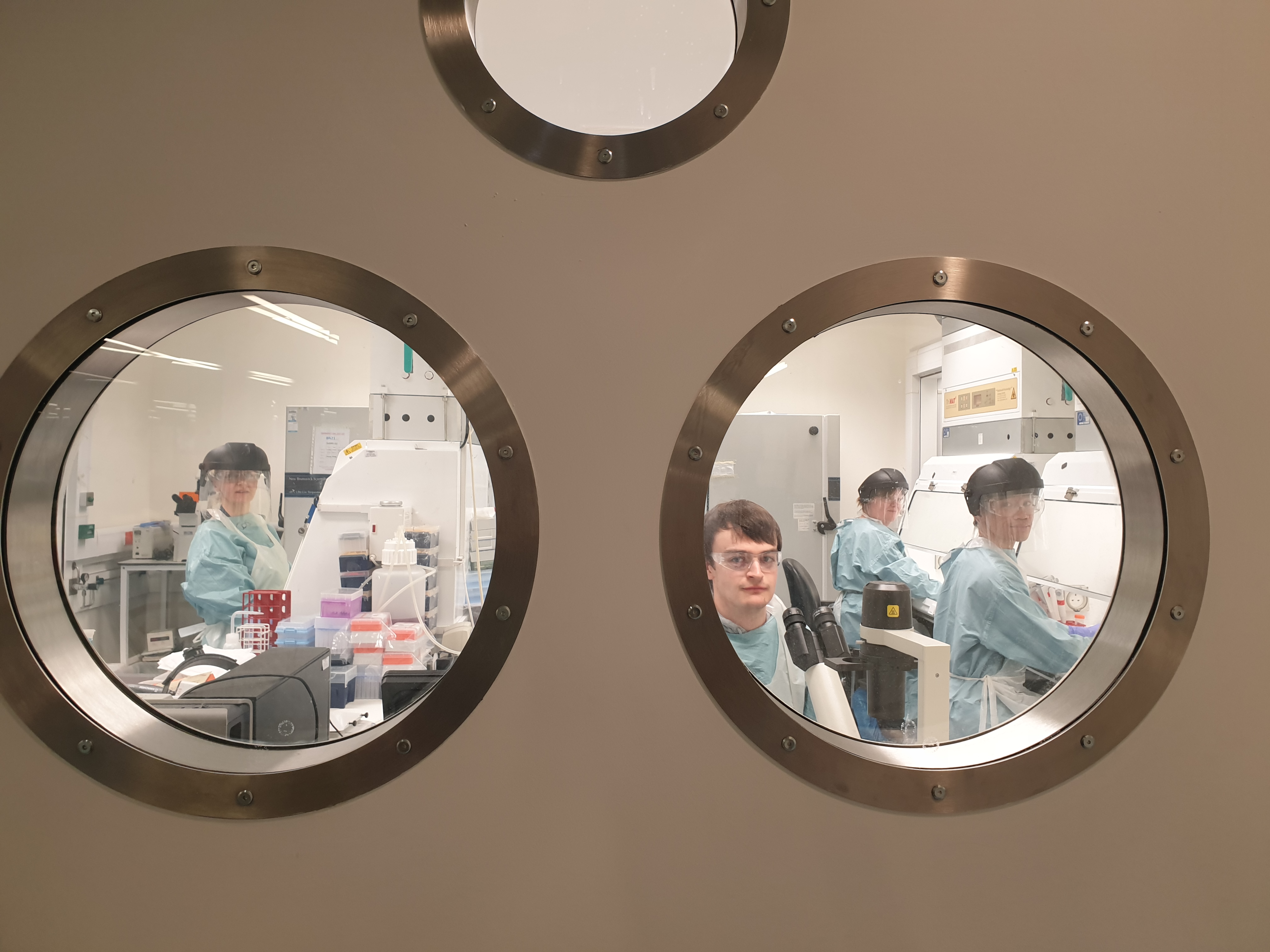Hospitals are safer places than you might think, new COVID-19 research finds
Research involving Queen Mary University of London suggests that currently the public should not fear contracting COVID-19 from hospital staff, who appear to be at low risk of infection by patients.

Inside the special containment lab processing COVID-19 samples
These are the early results from research with Barts Health and UCL. The initial findings, published in correspondence to The Lancet, show that infection among healthcare workers at present is more likely to reflect general community transmission than exposure within a hospital.
The researchers are collecting samples from over 400 staff at St Bartholomew’s Hospital displaying no coronavirus symptoms. Blood tests and nasal swabs are taken at weekly intervals.
Because of strict Health and Safety Executive rules regarding the handling of infectious materials, the samples are being processed in a special containment laboratory at the Blizard Institute, Queen Mary University of London, which is normally used to study HIV.
This lab is supported by the Rosetrees Trust and The Medical College of Saint Bartholomew’s Hospital Trust, and the sample processing is being performed by a small team of funded staff and volunteers mainly composed of current and former postdoctoral scientists and current PhD students, including Dr Corinna Pade, Dr Meleri Jones, PhD student Mr Joseph Gibbons and Dr Wing-Yiu Jason Lee.
Áine McKnight, Professor of Viral Pathology at the Blizard Institute, who is leading the team, said: “Ideally, we need to take blood samples not only from people with infections, but also from people before they become infected and continue to sample them as they become infected and the disease progresses. Each sample would provide a snapshot of the virus’s attack and the body’s response to it.
“This will offer insights into which people develop the most severe infection, enable testing of promising new diagnostic methods, identify new targets for drug treatments and vaccines and improve our understanding into immunity and viral transmission.
“If we act quickly, we can capture the progression of COVID-19 in the volunteers, delivering a unique insight into the disease. But in the current phase of the pandemic that is a race against time.”
Prof James Moon said: “Our research indicates that in the past 2-3 weeks, despite high numbers of patients with COVID-19 in our wards and intensive care units, rates of staff infection have fallen so much that it is unlikely the staff are being infected by patients.
“This low level of infection amongst healthcare staff should reassure patients and visitors that, as the pandemic recedes, infection from healthcare workers without symptoms is unlikely to present major risk.”
With those NHS staff showing symptoms of COVID-19 self-isolating at home, the research found the proportion at work with the disease but no symptoms is very low.
The rate of asymptomatic infection amongst hospital staff fell from 7% to 1% after the UK-wide lockdown was introduced, in line with the general London population.
The research team believe the data reinforces the case for background population surveillance and regular testing of healthcare workers, switching to the testing of all staff, even with no symptoms, if general infection rates rise.
Prof Moon said: “Public fear of hospitals is currently high, with the risk that patients with serious and treatable diseases present too late to prevent adverse outcomes. Our findings show that currently the rate of asymptomatic infection among hospital staff more likely reflects general community transmission than in hospital exposure.”
Prof Noursadeghi, from UCL, who is also involved in the research, said: “Tracking this epidemic will require ongoing monitoring of infection rates in both symptomatic and asymptomatic people in the general population. Our data suggest that routine screening of all health care workers without symptoms may not be necessary whilst infection rates in the general population are falling. If they begin to rise again, regular testing of health care workers irrespective of symptoms should be considered to protect these keyworkers and their patients.”
For media information, contact:
Joel Winston
Faculty Communications Manager (Medicine and Dentistry)
email: j.winston@qmul.ac.uk